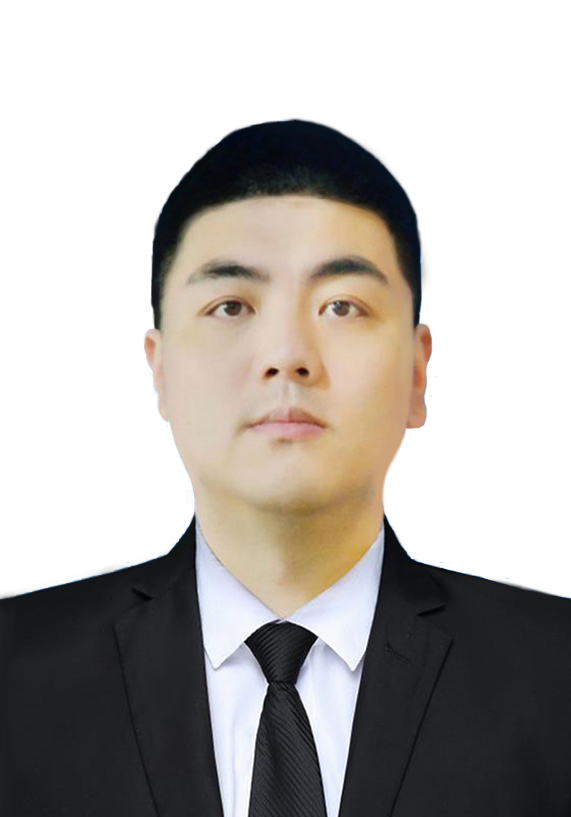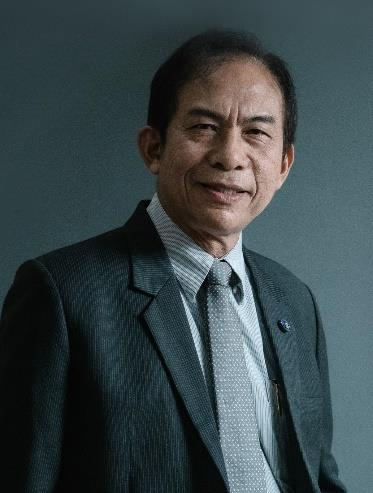Speech title: Designing Collaborative Space: How ‘un-learning’ design will help us ensure our futures are more sustainable, resilient and inclusive

Speakers
Keynote Speakers

Prof. Jin Zhuo
Communication University of Shanxi, China
Research Area: Industrial integration design strategy; Rural revitalization; Graphic design
Research Experience: In the past five years, presided over one National Arts Fund project, and participated in a total of two National Social Science Fund arts projects as the first participant; published a total of 21 papers, including 8 corejournals at home and abroad as the first author and corresponding author, and 13 papers in EI conferences, undergraduate journals, and general journals; As the first editor, two design textbooks and one design work have been published to promote the effectiveness of design talents in driving the direction of the design industry in society, promote the integration and upgrading of regional resources and innovative projects.
Speech title: Analysis of the Third-line Industrial Heritage Development Model from the Perspective of Cultural and Tourism Integration
Abstract: The article aims to analyze the specific strategies of the third-line industrial heritage development model from the perspective of cultural and tourism integration. On the basis of the current research on cultural and tourism integration, analyzes the development profile and conditions of industrial heritage in third-tier cities and the role of cultural and tourism integration development concepts in promoting and protecting industrial heritage. This research takes Luoyang City as an example, and conducts SWOT analysis on the development status of existing industrial heritage resources, combining the development concept of cultural and tourism integration with the protection and development of the Third-tier industrial heritage, and explores. It is suitable for Luoyang to radiate the industrial heritage development model of third-tier cities across the country, hoping to contribute to the development of tourism in the Third-tier cities at this stage as well as the protection of industrial heritage. The combination of industrial heritage and tourism can not only help cities form a unique tourism cultural image, but also promote the regional economic development of third-tier cities to a certain extent.

Prof. Zhihua Xu
Jingdezhen Ceramic University, China
Research Area: Design Art
Research Experience: Completed and under research eight national and provincial level projects. Published seven monographs. More than thirty papers have been published and included in SCI, A&HCI, CSSCI, EI, and CPCI. Won one provincial philosophy and social science award, several ceramic works awards, and eight practical patents.
Speech title:The inheritance of Jingdezhen kiln porcelain in Song and Yuan dynasties
Abstract: The development of porcelain sculpture at the Jingdezhen kilns during the Song and Yuan dynasties demonstrates the economic and cultural prosperity of the Song and Yuan dynasties, and it was this rapid economic development that drove the rapid improvement in the skills of porcelain sculpture at the Jingdezhen kilns during the Song and Yuan dynasties. It can be said that the porcelain sculpture produced at the Jingdezhen kilns is a model of Chinese porcelain sculpture, gathered from the successful skills of kilns across the country, combined with the vibrant local economic activity in which the two influenced and developed each other.The development of porcelain sculpture at the Jingdezhen kilns reflects the developed skills of the kilns across the country, as well as the artistic characteristics of the period's craft and cultural heritage. It is a re-invention of the heritage of other kilns such as Yue, Longquan, Ding, Ru, Jizhou and Yaozhou. The glazes, shapes and techniques of the Jingdezhen kilns of this period were all innovative and developed by absorbing the strengths of other kilns, with their white and delicate blue and white porcelain, strong glassy glazes and the richest decorative content, including incised flowers, prints, floral designs, piles of flowers and openwork.

Prof. Supachai Singyabuth
Mahasarakham University, Thailand
Research Area: CLMTV&CN Cambodia, Lao PDR, Myanmar, Thailand, Vietnam and China
Research Experience: Professor Dr.Supachai Singyabuth is a researcher in the field of arts and cultural anthropology. To teach the subject of qualitative research methodology in arts and cultural sciences in doctoral degree programs at universities in Thailand. A researcher of Asian countries who have been selected to support transnational research work, the 8 th cohort of the ASIA FELLOWS AWARLDS, research grants from the ASIAN SCHOLARSHIP FOUNDATION.
Speech title: Tradition, Re-invention of Tradition, Innovation, and Intelligent Design in the Process of Modernity and Globalization
Abstract: Presenting the phenomenon of Intelligent Design, Multi-Media Technology, and Information Engineering from the perspective of a researcher on arts. Under the principle of Intelligent Design, Multi-Media Technology, and Information Engineering are artifacts that need to understand both the Art Product and Social Process dimensions, human beings from the past to the present. In addition, the phenomena of Intelligent Design, Multi-Media Technology, and Information Engineering are related to local contexts, nation-states, and globalization that are not mutually exclusive. Intelligent Design, Multi-Media Technology, and Information Engineering. Therefore, incorporate a phenomenon that is a Tradition related to the social and cultural foundations that have been passed down from generation to generation. It is able to identify cultural identity in each set of society. As well as a phenomenon characterized by the Re-Invention of tradition and innovation that are integrated with various forms as a result of the power of modernity and globalization. Which does not completely separate tradition from innovation.

A. Prof. Ian William McArthur
Faculty ofArts, Design &Architecture_(ADA), University of New South Wales, Australia
Research Area:Design, Design anthropology, Interaction and experience design, Design management, Design practice and methods, Screen and digital media
Research Experience: Dr Ian McArthur is a hybrid practitioner working in the domains of experimental interdisciplinary practice, transcultural collaboration, soundart, experimental radio, metadesign, and education change. Research projects include the development of mad.lab, an urban research platform in Chongqing, South West China in collaboration with industry partners Priestman Architects and Cqubed. mad.lab’s program focuses on developing education, research, and industry projects to incubate, develop and present new site-specific, mediated and issue-based concepts for the future of cities. This intersects with Ian’s research investigating the development of participatory design methods using large urban screens as diagnostic tools for urban planning with Australia and China based researchers and practitioners.Ian has a long-standing association with China. In 2001-2003 he was Program Director of Graphic Design at La Salle DHU (Donghua University, Shanghai) where he initiated The Collabor8 Project to foster creative collaboration between China and Australia. This initiative lead to a decade of developing culturally adaptive pedagogies and design processes using online, social and responsive technologies to create collaborative experimental spaces. In 2015 Ian completed his doctoral thesis “Activating A Framework For Transcultural Interdisciplinary Collaboration In Design Education: Sino Australian Field Studies”.Ian’s practice as creative producer and sound artist involves utilising granular and generative synthesis, mobile technologies, and open source platforms in exhibitions and telematic, non-idiomatic improvised performances. These works are manifested in regular broadcasts with collaborator Annie Morrad on New York’s experimental radio channel Wave Farm WGXC 90.7 FM, and as heard on BBC Radio 6. He has also produced experimental sonifications for responsive interactive media environments used in a series of public art installations and exhibitions in Australia and China. His research is acknowledged internationally in peer-reviewed journals, book chapters, curated exhibitions and symposiums including the Media Architecture Biennale, Sydney 2016 (Doctoral Consortium Chair); AGIdeas Design for Business (2015); The Journal of Design Business & Society; ISEA2013 (Panel Chair); Hybrid Cities 2 and 3, University of Athens 2013/2015; the GeoCity Smart City Information Design Symposium CMoDA (2012, Beijing Design Week), ICDHS2012 8th Conference of the International Committee for Design History and Design Studies (2012, Sao Paulo); Red Objects: Collaboration in Experimental Design (2011, Sydney), Cumulus World Expo: Better City, Better Life Conference (2010, Shanghai), Xindanwei (2010, Shanghai), AGDA (2010, Sydney), ICOGRADA World Design Congress (2009, Beijing), Studio Teaching Forum (2009, Tasmanian School of Art, Hobart), The 3rd International Conference on Design Principles and Practices (2009, UdK, Berlin), and DesignEd Asia, (2008, Hong Kong Polytechnic).
Abstract: Faced with challenges such as rapid urbanisation, climate change, artificial intelligence, and the threat of global conflict, it is crucial that humans collaborate inclusively across culture and discipline to address the multitude of radical transformations underway. However, we aren’t good at this. Our design, research, and education systems are not equipped to help solve the wicked global problems humans face in our complex, hyper-connected world. Current design and education frameworks do not generate the collaborative transcultural synergies required to build a ‘shared vision’ for designing resilient global futures. Colonial histories, our assumptions as design practitioners, endemic lack of understanding between major world cultures, and design’s perpetuation of the universalising tendencies of Eurocentric thinking maintain a problematic status quo. The research examines ‘pluriversal’ approaches to participatory co-design using multi-vocal tactics reporting on case studies that challenge assumptions inherent to the Eurocentric design discourse that dominates how design is understood, how it is practiced, and who is permitted to practice it. In doing so it recognises the critical importance of diverse perspectives and knowledges in the design process, and seeks to engage with different cultural, social, and ecological contexts. The research findings discuss how ‘un-learning’ Western tropes and modes of design and design research, and ‘re-learning’ how we design together allows us to expand current design and research practices to create collaborative spaces where end-users lead co-design to ensure their actual needs and preferences are met and effective user-centered, inclusive designs can be realised.
Updaiting.